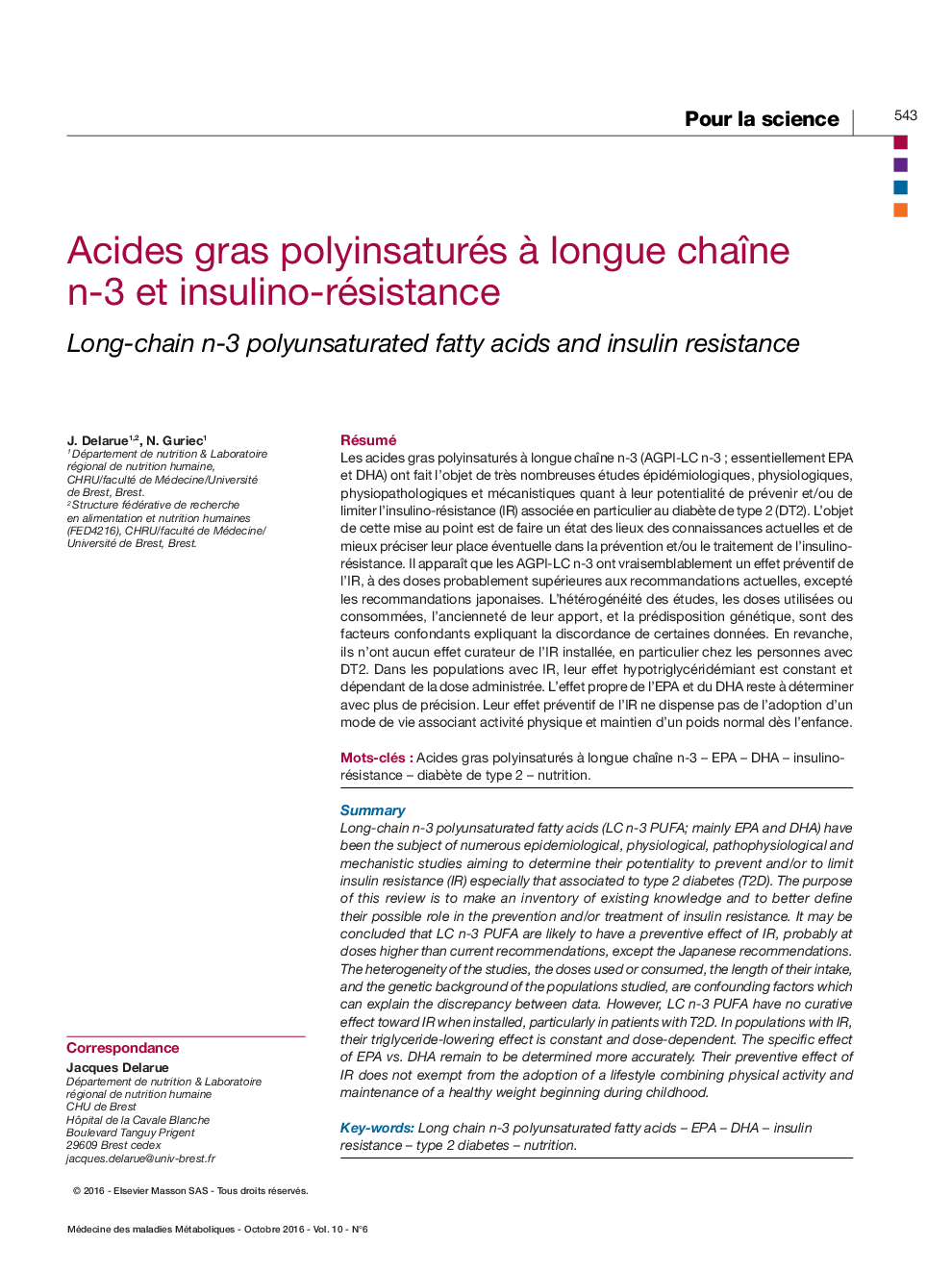| Article ID | Journal | Published Year | Pages | File Type |
|---|---|---|---|---|
| 5656704 | Médecine des Maladies Métaboliques | 2016 | 11 Pages |
Abstract
Long-chain n-3 polyunsaturated fatty acids (LC n-3 PUFA; mainly EPA and DHA) have been the subject of numerous epidemiological, physiological, pathophysiological and mechanistic studies aiming to determine their potentiality to prevent and/or to limit insulin resistance (IR) especially that associated to type 2 diabetes (T2D). The purpose of this review is to make an inventory of existing knowledge and to better define their possible role in the prevention and/or treatment of insulin resistance. It may be concluded that LC n-3 PUFA are likely to have a preventive effect of IR, probably at doses higher than current recommendations, except the Japanese recommendations. The heterogeneity of the studies, the doses used or consumed, the length of their intake, and the genetic background of the populations studied, are confounding factors which can explain the discrepancy between data. However, LC n-3 PUFA have no curative effect toward IR when installed, particularly in patients with T2D. In populations with IR, their triglyceride-lowering effect is constant and dose-dependent. The specific effect of EPA vs. DHA remain to be determined more accurately. Their preventive effect of IR does not exempt from the adoption of a lifestyle combining physical activity and maintenance of a healthy weight beginning during childhood.
Related Topics
Health Sciences
Medicine and Dentistry
Endocrinology, Diabetes and Metabolism
Authors
J. Delarue, N. Guriec,
